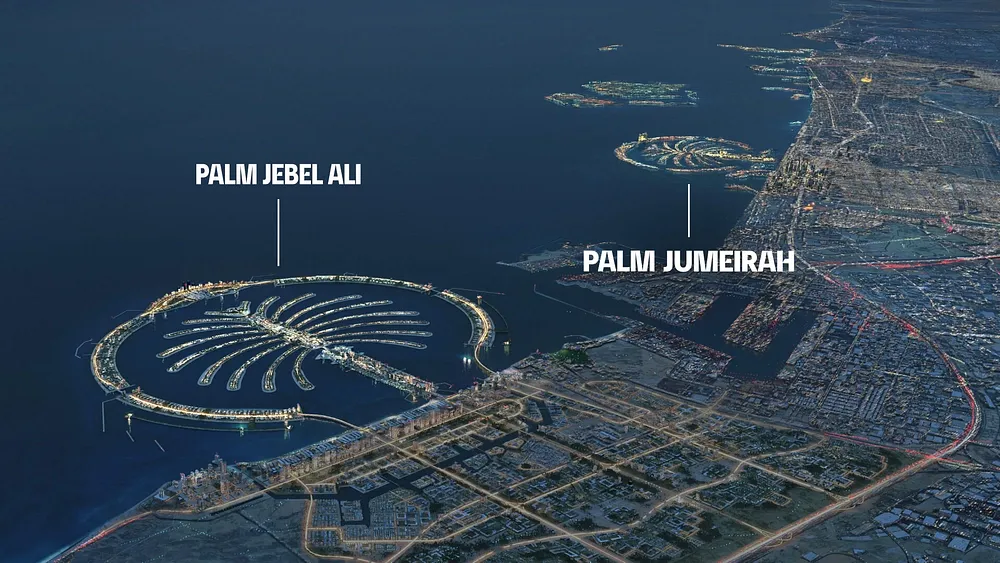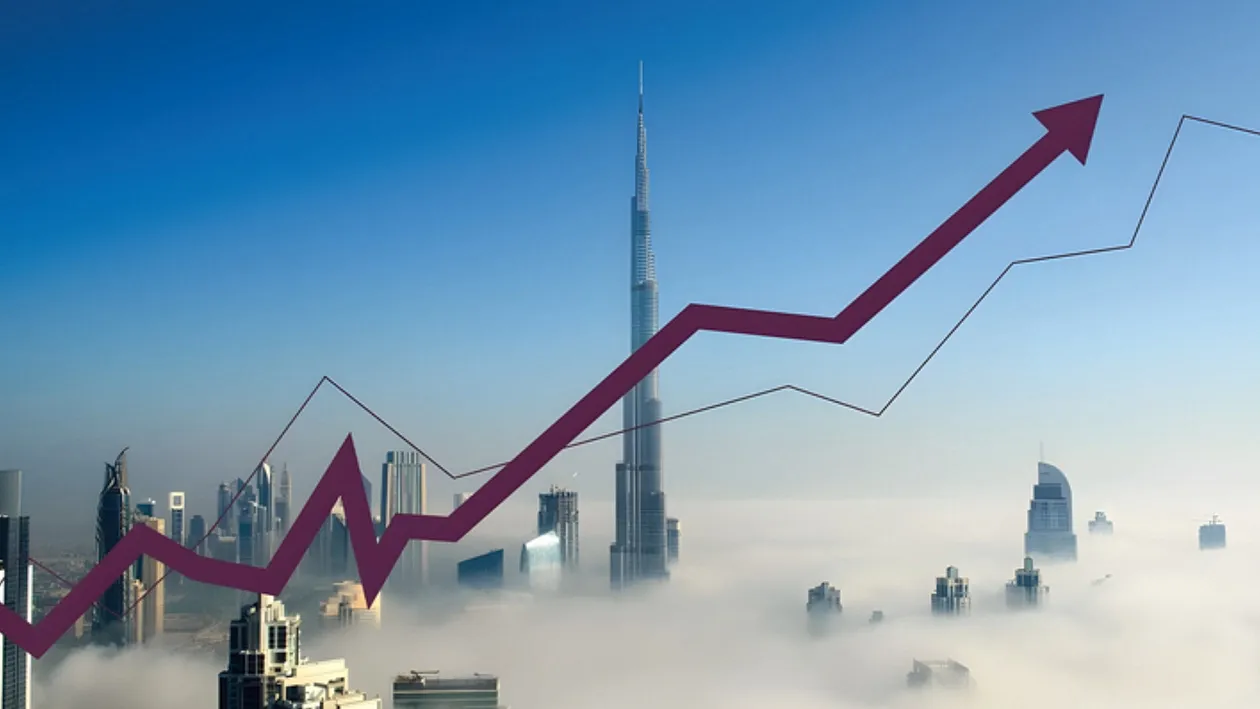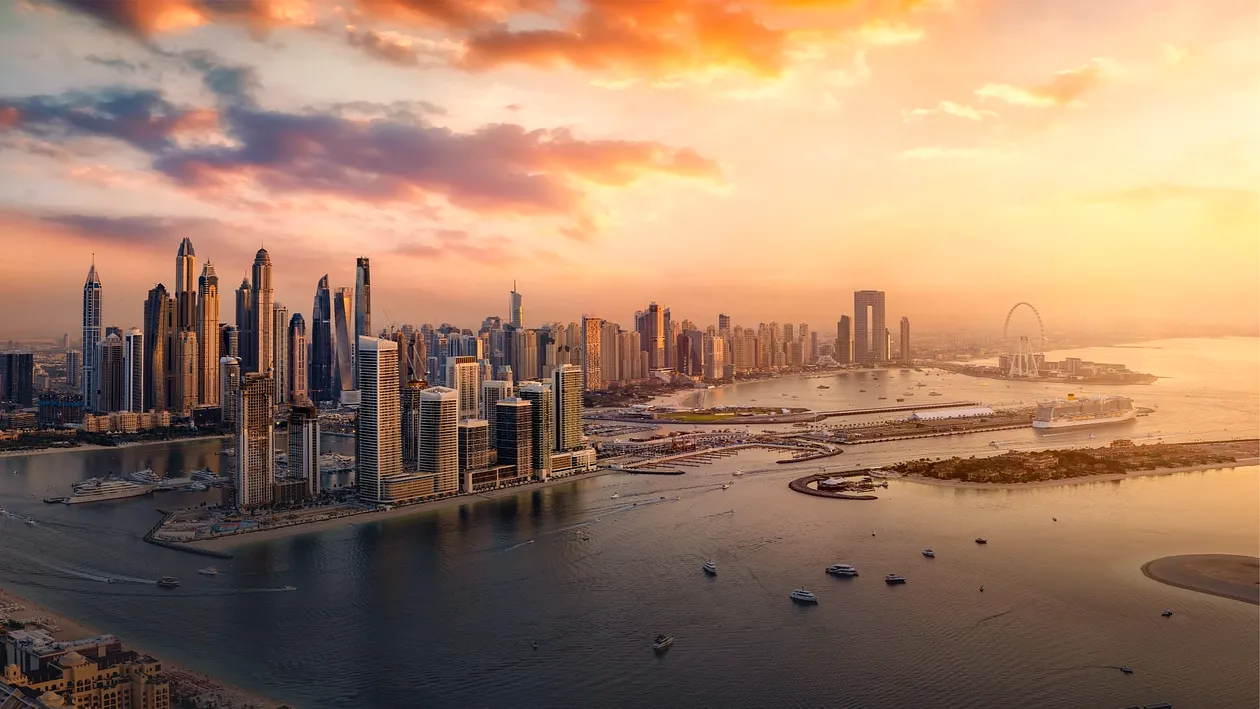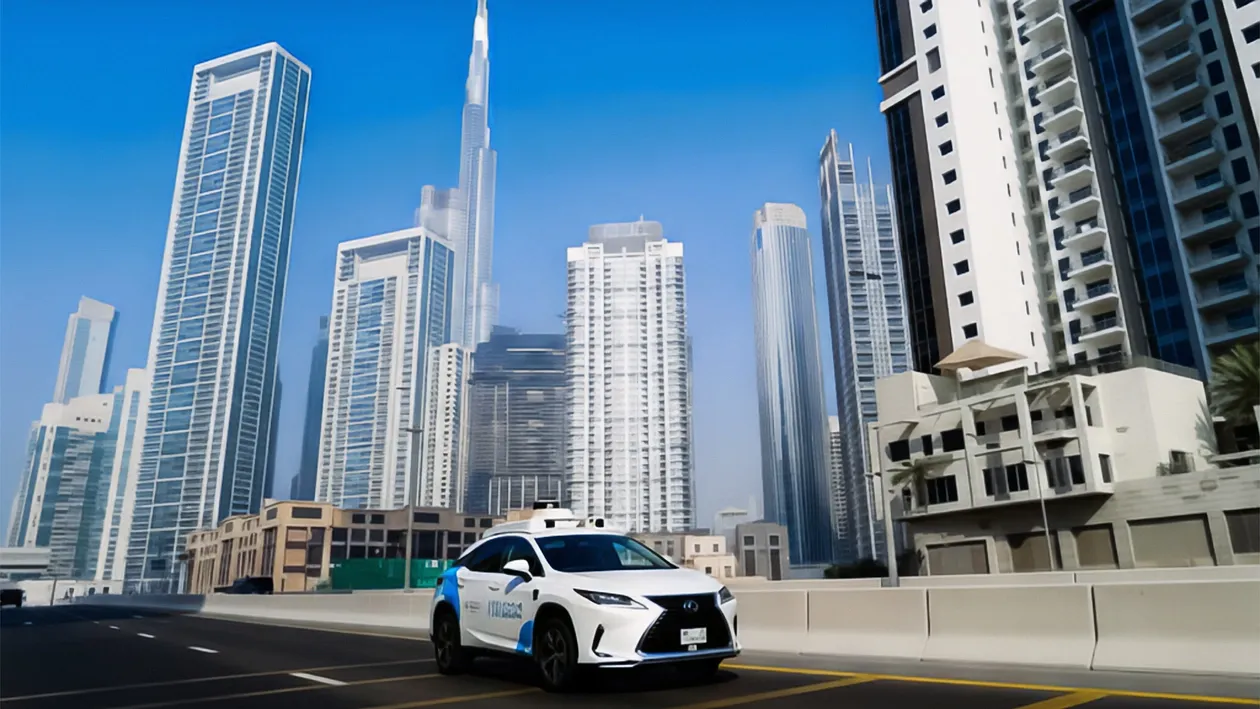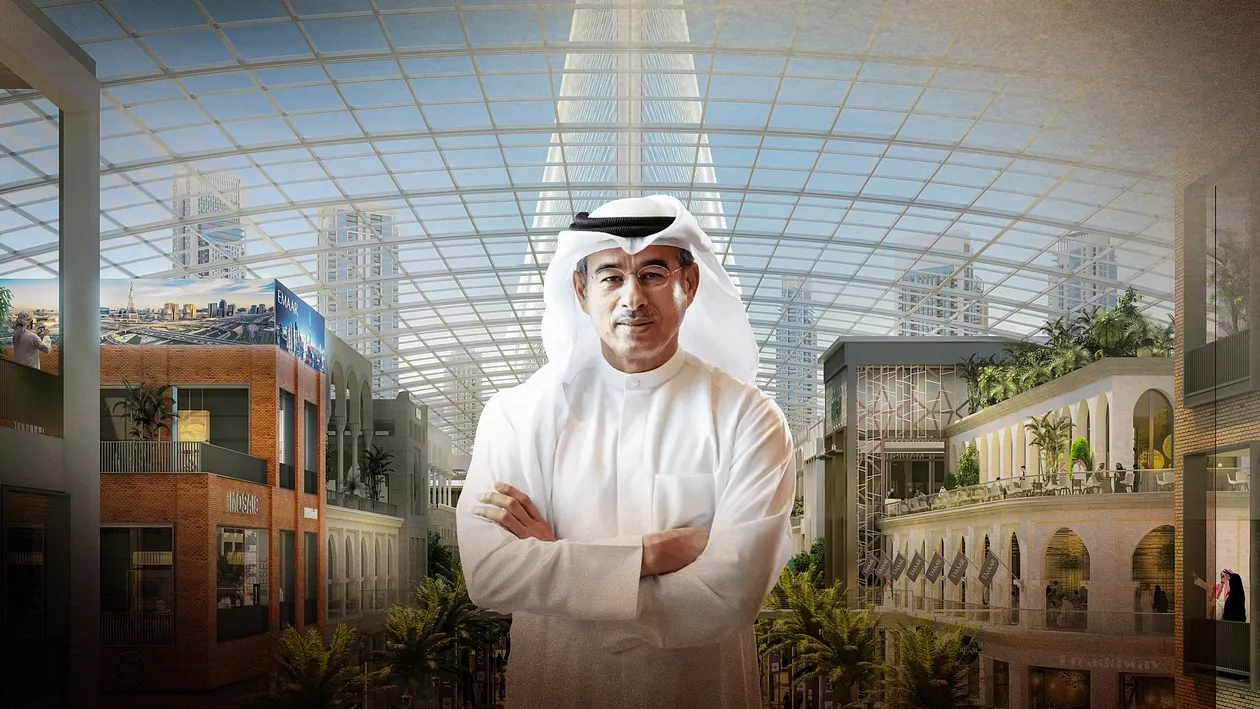Signature Collection
Explore SignatureDubai, a city known for its architectural marvels, has elevated its real estate landscape with the creation of artificial islands. Among the most renowned of these are Palm Jumeirah and Palm Jebel Ali, both developed by Nakheel Properties. While they may share the iconic palm tree shape, these islands offer varied experiences to residents and visitors. In this blog, we'll delve into the key differences, similarities, and investment potential of Palm Jebel Ali vs Palm Jumeirah to help you decide which is the better option for your real estate investments.
About Palm Jebel Ali
Palm Jebel Ali, is one of Nakheel Properties' most ambitious projects in Dubai. Spanning an impressive 147 million square feet, Palm Jebel Ali is nearly 50% larger than its sister island, Palm Jumeirah.
This man-made island was initially conceived in the early 2000s, with construction recently resumed in 2023. The island’s design features 16 fronds and a broader crescent, allowing for a more expansive layout and diverse development opportunities.
Unlike Palm Jumeirah, which focuses primarily on residential and hospitality offerings, Palm Jebel Ali is planned as a mixed-use development, blending residential, commercial, and leisure spaces.
The master plan includes theme parks, marina parks, and water homes, ensuring a vibrant and family-friendly atmosphere. Additionally, extensive green spaces and waterfront promenades will enhance the island’s appeal, appealing to those who appreciate a balanced outdoor lifestyle.
The island is set to accommodate up to 250,000 residents, making it a thriving community in its own right. Earlier, the area comprised mansions and villas, but recently, Nakheel has also launched the first apartment buildings on the iconic Palm Jebel Ali spine.
Book Your Unit in Palm Central Private Residences Now!
About Palm Jumeirah
Palm Jumeirah is perhaps Dubai’s most iconic real estate development, symbolizing luxury, innovation, and exclusivity. Developed by Nakheel Properties, this 61 million-square-foot island is shaped like a palm tree, with 17 fronds extending into the Arabian Gulf.
Completed in the early 2000s, Palm Jumeirah has established itself as a premier destination for those seeking a luxurious lifestyle in one of the world’s most vibrant cities.
Known for its upscale residential properties, Palm Jumeirah offers a mix of luxury villas, apartments, and penthouses, catering to affluent buyers and high-net-worth investors.
The island is home to some of Dubai’s most luxurious hotels, including the iconic Atlantis The Palm, which attracts tourists from all over the globe. In addition to its stunning beachfront properties, residents and visitors enjoy access to world-class amenities, including private beaches, marinas, and upscale shopping.

Key Differences Between Palm Jebel Ali and Palm Jumeirah
While both Palm Jumeirah and Palm Jebel Ali share the iconic palm shape and are developed by Nakheel Properties, they cater to different lifestyles and investment goals. Each island offers its unique blend of amenities, location advantages, and future potential. Below, we explore the key differences between these two remarkable developments.
Covered Area
- Palm Jebel Ali: Spanning 147 million sq. ft., Palm Jebel Ali is nearly 50% larger than Palm Jumeirah. It consists of 16 fronds and a broader crescent, accommodating a larger number of properties and a more diverse range of activities.

- Palm Jumeirah: Covering 61 million sq. ft., Palm Jumeirah has 17 fronds primarily designed for luxury residential villas, hotels, and resorts. Its compact size makes it more exclusive but limits its expansion potential.
Construction and Development
Palm Jumeirah: Fully developed and operational since the early 2000s, Palm Jumeirah is a thriving residential and tourism hub. It features world-class hotels, such as the iconic Atlantis The Palm, and offers a plethora of dining and leisure options.
Palm Jebel Ali: Initially started in the early 2000s, construction on Palm Jebel Ali was halted but resumed in 2023. The island is currently under development and is expected to include theme parks, water homes, and marina parks, catering to a family-oriented lifestyle.
Tourist Attractions
- Palm Jumeirah: Known for its upscale lifestyle, Palm Jumeirah is a hub for luxury tourism. It features top-notch hotels, such as the Atlantis, Zabeel Saray, and the Waldorf Astoria. Visitors can also enjoy beach clubs, fine dining, and water sports.

- Palm Jebel Ali: Although still under construction, the island is planned to include theme parks, marinas, and water homes. The vision for Palm Jebel Ali is to create a family-centric destination with expansive parks and entertainment facilities.
Location of Palm Jumeirah and Palm Jebeli Ali
- Palm Jumeirah: Situated closer to the heart of Dubai, approximately 25 km from the city center and 40 km from Dubai Marina. Its strategic location makes it an ideal choice for those seeking quick access to urban amenities and entertainment.
- Palm Jebel Ali: Located further west, around 50 km from Downtown Dubai. It offers a more tranquil environment away from the city's hustle, with plans for extensive green spaces and family-friendly attractions.
Property Prices
- Palm Jumeirah: As one of the most prestigious addresses in Dubai, Palm Jumeirah commands a premium in the real estate market. Villas and apartments in Palm Jumeirah start from AED 6 million and can go up to AED 23 million, particularly for exclusive waterfront properties.
- Palm Jebel Ali: While prices are currently lower due to its under-construction status, experts predict that property values will rise once the island is fully developed. Prices currently start at just AED 2.5 million for the first apartments at Palm Jebel Ali, offering a potentially lucrative opportunity for early investors.
Popular Properties
- Palm Jumeirah: This iconic island is home to some of Dubai’s most luxurious residences, including the Atlantis Royal Residences, One at Palm Jumeirah, and Serenia Residences. Some of the off-plan properties in the area include The Alba Furnished Residences, Ela Residences, and Orla Infinity.
- Palm Jebel Ali: As one of Nakheel’s ambitious projects, Palm Jebel Ali is set to redefine waterfront living. The island will feature Beach Mansions, Beach Villas, and Coral Villas, meticulously designed to offer a seamless blend of contemporary aesthetics and comfort. These spacious homes boast seven bedrooms, formal living areas, and expansive outdoor spaces, complete with direct beach access.

Comparing Lifestyle and Community Vibe
Palm Jumeirah: Upscale, Exclusive, and Urban
Residents and visitors can enjoy a premium lifestyle with access to private beaches, world-class dining, and luxurious shopping options like The Pointe and Nakheel Mall. The island is known for its vibrant nightlife, making it popular among expatriates and affluent individuals.
Palm Jebel Ali: Spacious, Family-Oriented, and Expansive
Palm Jebel Ali is planned to be more spacious, with larger parks, family entertainment centers, and a focus on creating a balanced lifestyle. It will likely cater to families looking for a quieter, more expansive environment without compromising on amenities.

Comprehensive Comparison Table
Here is a detailed table summarizing the differences between Palm Jebel Ali and Palm Jumeirah in terms of size, purpose, development status, attractions, real estate prices, etc.
| Feature | Palm Jebel Ali | Palm Jumeirah |
| Size and Scale | Spanning over 147 million sq. ft., designed to be 50% larger than Palm Jumeirah | Covers approximately 61 million sq. ft., making it more compact |
| Development Phase | Currently under active construction, expected completion by November 2028 | Fully developed and operational since the mid-2000s |
| Community Vision | A diverse, mixed-use destination with residential, leisure, and commercial elements | Primarily focused on luxury residential and high-end tourism |
| Housing Density | Designed to accommodate up to 250,000 residents with spacious layouts | Houses about 10,000 residents, emphasizing exclusivity |
| Waterfront Living | Extensive water homes with larger, family-friendly plots | Exclusive beachfront villas with limited water access |
| Projected Real Estate Costs | Starting prices from AED 18.1 million, with potential appreciation post-development | Premium prices start at AED 6 million, due to the established reputation |
| Transport Infrastructure | Planned future connectivity via dedicated rail and ferry systems | Already connected with seamless road access and a monorail line |
| Leisure and Attractions | Set to include expansive green parks, theme parks, and a marina district | Known for iconic destinations like Atlantis Hotel, beach clubs, and luxury malls |
| Proximity to City Center | Located 50 km from Downtown Dubai, offering a quieter, suburban feel | Situated just 25 km from Downtown, ideal for quick access to urban amenities |
| Lifestyle Appeal | Focus on expansive living spaces, ideal for families seeking tranquility | Perfect for luxury seekers and expatriates wanting proximity to vibrant city life |
| Investment Strategy | High potential for future returns as development progresses; ideal for long-term investors | Established market with immediate rental yields and capital appreciation |
| Sustainability Plans | Emphasizes eco-friendly construction with green spaces and water-efficient landscapes | Focuses on luxury but limited in expanding green infrastructure due to space constraints |
Similarities Among Palm Jumeirah and Palm Jebel Ali?
Despite being two distinct projects, Palm Jumeirah and Palm Jebel Ali have several similarities:
- Iconic Palm Shape: Both islands are designed in the shape of a palm tree, making them architectural marvels visible from space.
- Developer: Both islands were developed by Nakheel Properties, showcasing Dubai’s ambition to push the boundaries of land reclamation and real estate innovation.
- Luxury Waterfront Living: Each island offers exclusive waterfront properties with stunning views of the Persian Gulf, private beaches, and access to top-tier amenities.
- Tourist Appeal: Both islands are set to attract tourists with their luxurious resorts, marinas, and fine dining options, adding to Dubai's allure as a global tourism hub.
Investment Analysis: Palm Jebel Ali vs Palm Jumeirah — Which Is Better?
If you're wondering, "Palm Jebel Ali vs Palm Jumeirah: Which is better to invest in?", the answer largely depends on your investment goals.
- Palm Jumeirah is perfect for those who seek an established, high-end community with quick access to Dubai’s bustling city life.
- Palm Jebel Ali, on the other hand, is ideal for investors looking to be part of a growing community with promising future returns. Its larger size, planned amenities, and mixed-use development make it a compelling option for those interested in a long-term investment.
Both islands symbolize Dubai's spirit of innovation and luxury. Whether you choose the exclusive allure of Palm Jumeirah or the future potential of Palm Jebel Ali, you’ll be investing in two of the most iconic developments in the world.
FAQs
No, they are not the same. Palm Jumeirah is the first and currently the most developed of the Palm Islands, while Palm Jebel Ali is still under construction with a focus on a larger mixed-use community.
The main differences lie in size, development status, and purpose. Palm Jebel Ali is larger and still under development, while Palm Jumeirah is fully developed, offering high-end residential and tourism options.
Palm Jebel Ali, currently under development, is poised to become a significant addition to Dubai's coastline. It is designed to accommodate around 35,000 families and will feature over 80 hotels and resorts, enhancing Dubai's tourism sector.
Aligned with the Dubai 2040 Urban Master Plan, Palm Jebel Ali aims to deliver high standards of urban infrastructure, expand beach destinations, and promote sustainable development. The project will also integrate smart city technologies and sustainability practices, positioning it as a global benchmark for waterfront living.
Both have their unique appeal. Palm Jumeirah is better for those seeking luxury and exclusivity, while Palm Jebel Ali is ideal for those interested in growth potential and a mixed-use community.
Yes, Palm Jebel Ali offers strong long-term investment potential with its larger size, planned amenities, and expected property value appreciation as development progresses.
Construction paused in 2008 due to the global financial crisis. It resumed in 2023 as part of Dubai’s expansion plans, with updated designs and infrastructure.
For more information, get in touch with us at Provident
